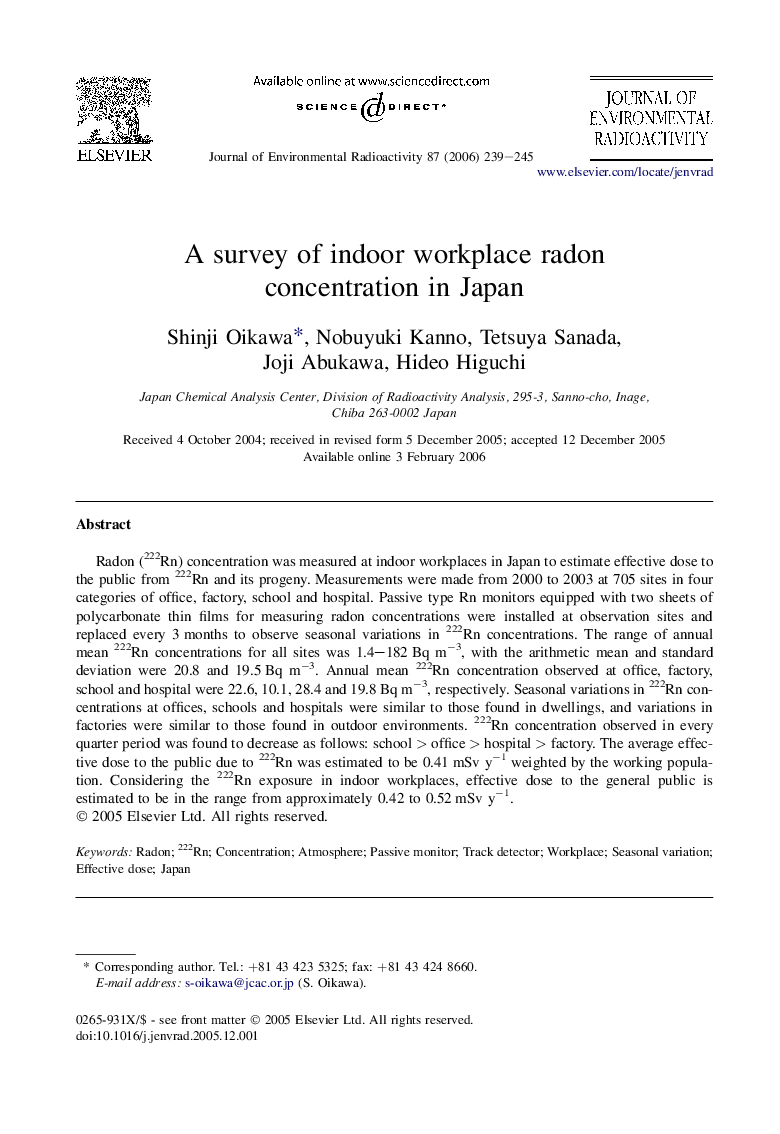| Article ID | Journal | Published Year | Pages | File Type |
|---|---|---|---|---|
| 1739626 | Journal of Environmental Radioactivity | 2006 | 7 Pages |
Radon (222Rn) concentration was measured at indoor workplaces in Japan to estimate effective dose to the public from 222Rn and its progeny. Measurements were made from 2000 to 2003 at 705 sites in four categories of office, factory, school and hospital. Passive type Rn monitors equipped with two sheets of polycarbonate thin films for measuring radon concentrations were installed at observation sites and replaced every 3 months to observe seasonal variations in 222Rn concentrations. The range of annual mean 222Rn concentrations for all sites was 1.4–182 Bq m−3, with the arithmetic mean and standard deviation were 20.8 and 19.5 Bq m−3. Annual mean 222Rn concentration observed at office, factory, school and hospital were 22.6, 10.1, 28.4 and 19.8 Bq m−3, respectively. Seasonal variations in 222Rn concentrations at offices, schools and hospitals were similar to those found in dwellings, and variations in factories were similar to those found in outdoor environments. 222Rn concentration observed in every quarter period was found to decrease as follows: school > office > hospital > factory. The average effective dose to the public due to 222Rn was estimated to be 0.41 mSv y−1 weighted by the working population. Considering the 222Rn exposure in indoor workplaces, effective dose to the general public is estimated to be in the range from approximately 0.42 to 0.52 mSv y−1.
